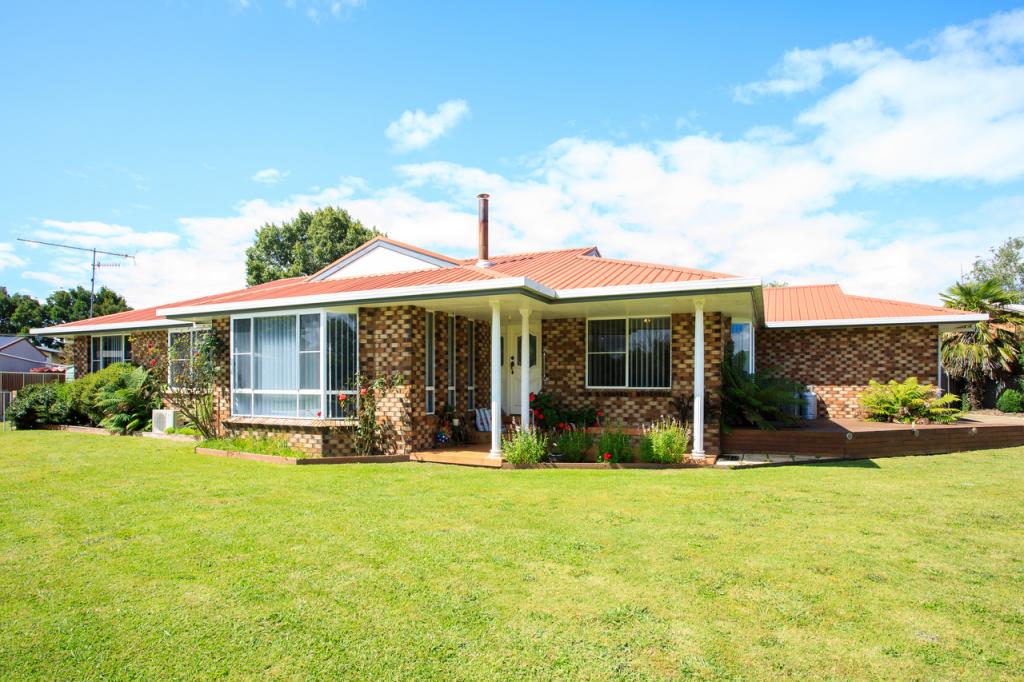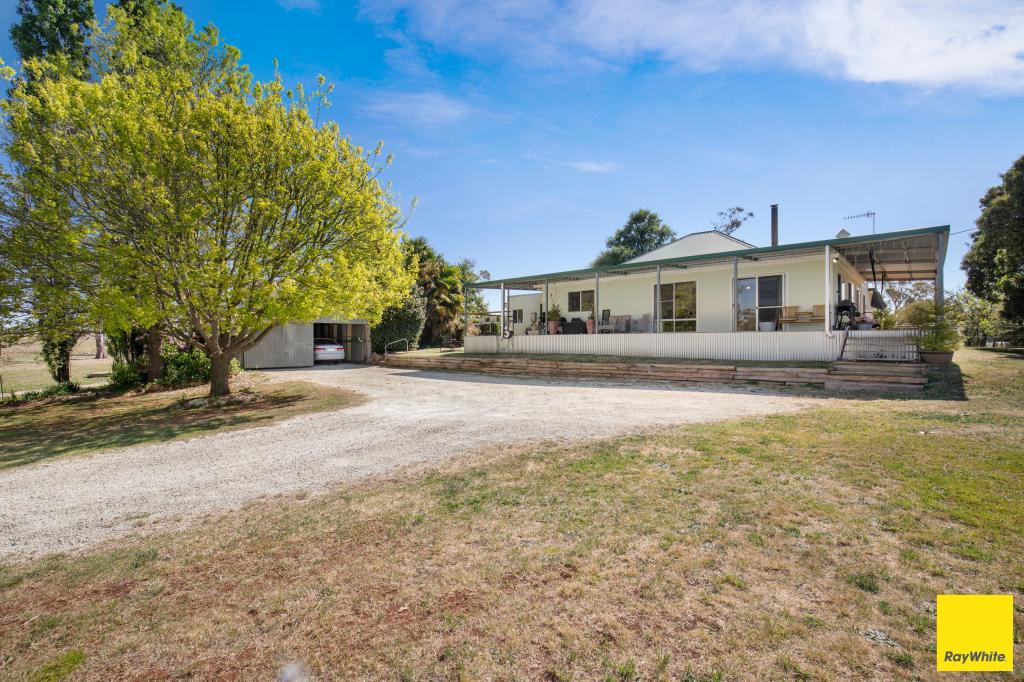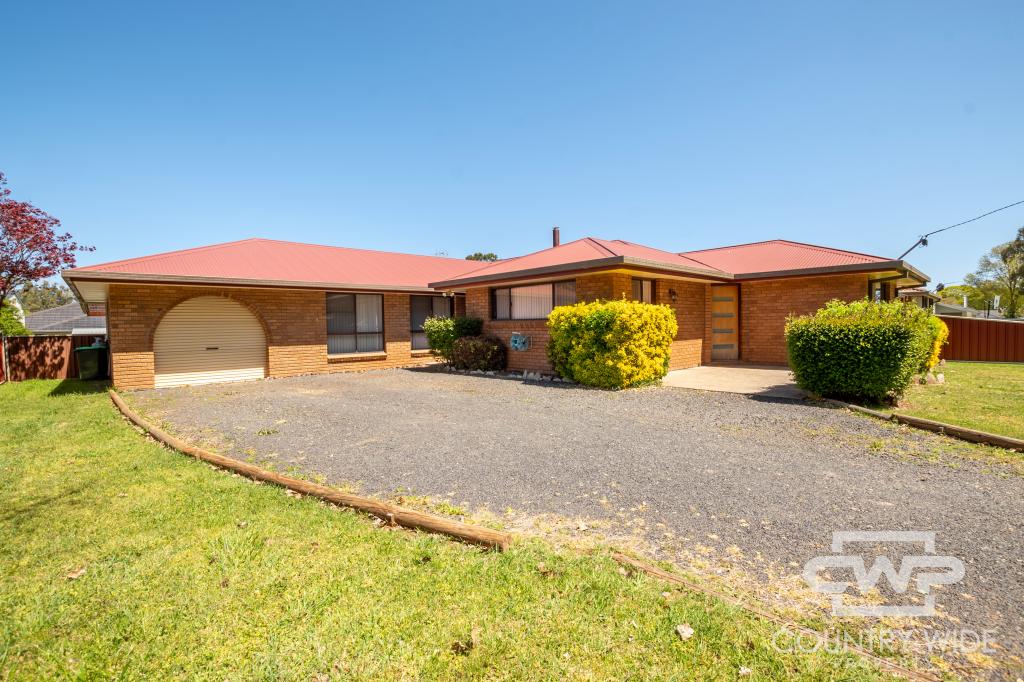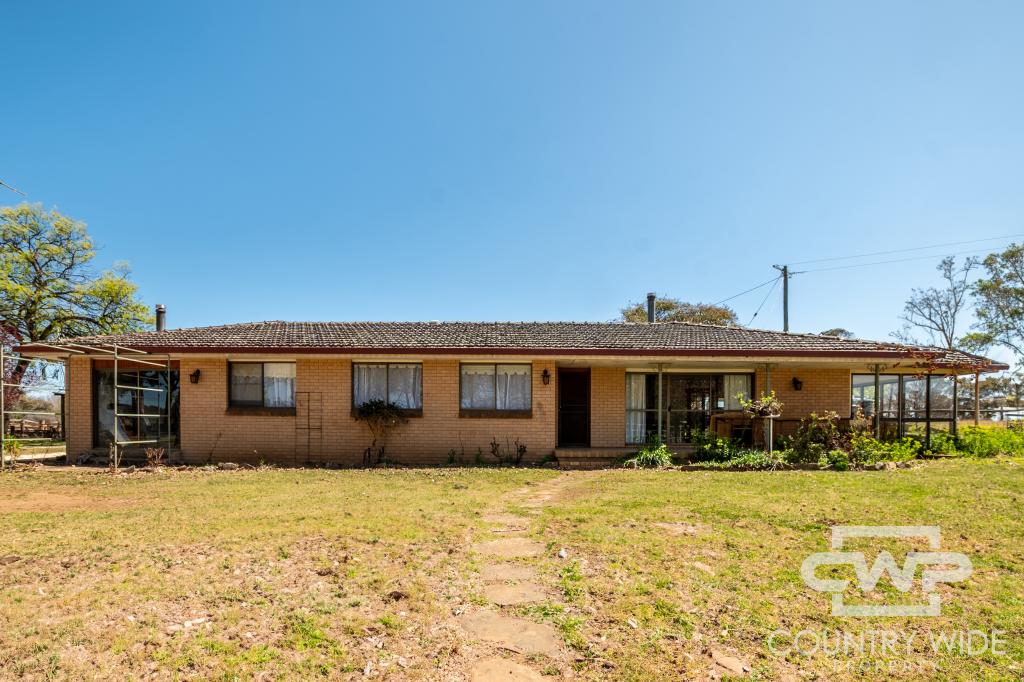34 Robinsons LaneGuyra NSW 2365
Property Details for 34 Robinsons Lane, Guyra
34 Robinsons Lane, Guyra is a 5 bedroom, 3 bathroom House with 3 parking spaces. The property has a land size of 68435m2. While the property is not currently for sale or for rent, it was last sold in February 2022.
Last Listing description (February 2022)
A true once in a lifetime opportunity to secure a unique and historically significant home in the New England high country.
Historic Rosewood, a landmark property located on the outskirts of the township of Guyra on 6.847ha or 17 acres of undulating and highly fertile volcanic basalt soils.
Known locally as one of the most historically significant properties in the area, Rosewood was first settled in the early 1860s and the property was home to the first registered dairy in NSW, providing milk and butter to the township, alongside other seasonal food staples such as pork, poultry and crops on the 374 original acres. The original orchard was taken out some years ago.
The stunning blue brick residence is first dated from 1904 with the main home being erected in 1906 with later additions in around 1910 and 1920. Some original sections are noted as being built from bricks fired on the property.
Described as having both Federation and Edwardian design features, Rosewood has verandas on two sides, high set ceilings, ornate cornices, long flowing hallway, Australian Red Cedar doors and skirting boards and oversized hardwood architraves. These all combine beautifully with Rosewood's grand scale and proportions.
The home has been tastefully updated with each owner. It now benefits from features such as wireless NBN, a modern fully operational slow combustion 4 ovens cooking and heating stove with water jacket and hydronic heating. The home also has multiple wood or gas heaters plus reverse air-conditioning in the TV room and underfloor electric heating in the lounge, dining and ensuite bathroom. The home enjoys a solar hot water service backed up by the slow combustion stove and a large solar electricity system that feeds into the State Grid.
The updated country-style kitchen flows onto a sunny north facing sunroom and provides an inspirational space for the home that could be considered the "beating heart" of Rosewood.
Large bedrooms contain original fireplaces and hearths alongside French doors (opening onto the verandas) and generous layouts. The master bedroom is home to a stunning Bay window and has been adapted to allow for an ensuite.
Set amongst meandering and mature gardens, the home offers an unrivaled and captivating street presence with its elevated position on the block. The sprawling gardens contain a stunning variety of both native and exotic trees, bulbs, shrubs and ground covers. A dedicated orchard with its watering system offers many fruit and nut options, including pears, plums, nectarines, cherries, apricots, figs, black and red currants, quince, chestnut and walnuts. There are also raspberries, blackberries and boysenberry plants plus new red and white grapevines.
The property is watered with a fully equipped mains powered bore that pumps to a large header tank and reticulates via 2-inch perimeter water distribution pipes to over 15 taps throughout the grounds. Bore water also supplies the cabin. It is of very high quality. This claim is supported by a detailed laboratory analysis of the bore water. Rainwater feeds the house with excellent storage and town water is also tapped in if needed.
A quaint single bedroom cottage offers private accommodation and extensive, long distance countryside views, particularly to the north and west. The cabin has a small north facing deck.
There is also a two room brick building which was the original dairyman's house. It was built in 1904 from bricks made on site. It contains a small bedroom and a lounge area with a working open fireplace. This building is currently used for the storage of garden equipment. It could, with Council's consent, be made into a studio or extended to make a 2nd cabin. Cold water only is available to a basin in the small bedroom.
Finally there is an original horse stables building that may, at some time, have been used as part of a piggery operation. This building currently is mostly vacant. It could again be used as a stable or perhaps part could be converted into a chicken house.
The house, stables, original dairyman's house and some trees that were planted by the original settlers are locally heritage listed. Any external works to these buildings or removal of these trees require the consent of Council.
The property is said to have had connections with the gentleman bushranger Captain Thunderbolt - Frederick Wordsworth Ward (1835-1870). Fred was always polite with his victims and never used violence. While Fred never visited the existing house, as he was dead before it was built, it is said he did visit the original house when he was in his 30's. This was a wattle and daub building, basically a bark hut. Early in 1868, Fred took on a young accomplice, William Monckton, and had a busy bushranging year. This apparently included robbing stage coaches' travelling from Armidale to Guyra. On at least one such occasion Fred is said to have travelled from the top of the Pinch, near Black Mountain, after robbing a stagecoach, on horse to Rosewood. It is said he would change horses at Rosewood if being pursued by the police or, if not, stay for dinner. During the following year-and-a-half, Fred ventured out on only half-a-dozen occasions. He was shot and killed by police at Kentucky Creek, near Uralla, on 25 May 1870, aged just 35.
Property History for 34 Robinsons Lane, Guyra, NSW 2365
- 02 Feb 2022Sold for $960,000
- 06 Jan 2022Listed for Sale Market Preview
Commute Calculator
Recent sales nearby
See more recent sales nearbySimilar properties For Sale nearby
See more properties for sale nearbySimilar properties For Rent nearby
See more properties for rent nearbyAbout Guyra 2365
The size of Guyra is approximately 292.3 square kilometres. It has 1 park covering nearly 0.2% of total area. The population of Guyra in 2011 was 1,919 people. By 2016 the population was 2,014 showing a population growth of 5.0% in the area during that time. The predominant age group in Guyra is 0-9 years. Households in Guyra are primarily childless couples and are likely to be repaying $1000 - $1399 per month on mortgage repayments. In general, people in Guyra work in a labourer occupation. In 2011, 72.8% of the homes in Guyra were owner-occupied compared with 68.6% in 2016.
Guyra has 1,289 properties. Over the last 5 years, Houses in Guyra have seen a 57.12% increase in median value, while Units have seen a 52.90% increase. As at 31 October 2024:
- The median value for Houses in Guyra is $344,126 while the median value for Units is $333,345.
- Houses have a median rent of $370 while Units have a median rent of $190.
Suburb Insights for Guyra 2365
Market Insights
Guyra Trends for Houses
N/A
N/A
View TrendN/A
N/A
Guyra Trends for Units
N/A
N/A
View TrendN/A
N/A
Neighbourhood Insights
© Copyright 2024 RP Data Pty Ltd trading as CoreLogic Asia Pacific (CoreLogic). All rights reserved.


 0
0
 0
0 0
0 0
0 0
0 0
0
